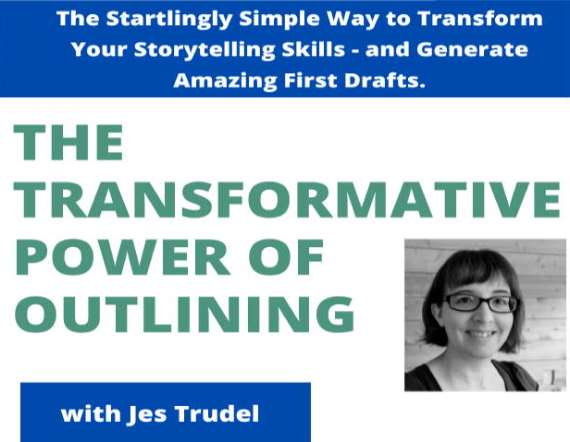
7 Tips for Writing a Fantastic (and Timeless) Author Bio
If you’re a serious writer, at some point you will be asked to submit an author bio. An author bio is a blurb, usually at the end of a book or article, that outlines a writer’s interests, history, and publishing credits.
Your bio is supposed to sell you as a writer and make you shine, but writers really struggle to write them. Apparently, authors would rather write about anything other than themselves (most of them anyway).
These days, it’s not enough to just write a good bio, you need to write a great one that you don’t mind having float around for infinity. If you bio is published anywhere digital, you’ll want it to stay relevant for years to come.
Think about the last author bio you wrote and ask yourself: if someone reads it 10 years from now, will it still make you shine? If not, you may find the tips below helpful in writing your next bio.
Here are 7 Tips for Writing a Fantastic (and Timeless) Author Bio:
Follow the editor’s submission guidelines.
The editor requesting your author bio will likely tell you how many words or characters you can include. Follow these guidelines! Don’t submit a bio that’s longer because you’ll not only show them you can’t follow instructions, you’ll also lose creative control over which parts are included in the final version. You may not like what they cut…or how they cut it.
Unless you’re told otherwise, write in the third person.
Ninety-nine per cent of the time, bios in books and magazines are written in the third person. Author websites are about the only place you’ll see a writer bio starting with “I”.
Third-person bios simply sound more professional. They also seem as though they’ve been written by some reliable, impartial person. Think about it: do you usually rely more on a narrator’s opinion of themselves or other people’s statements about them? There’s a reason we’re always talking about unreliable narrators!
Use dates not relative time periods.
Writers often refer to key points in their writing careers using lengths of time. For example, “Han has been writing for 10 years.” This information quickly becomes dated. Instead, use dates: “Han has been writing since 2010.” This will always be true, no matter how many years go by.
Include only the most relevant publishing credits.
Some writers have a long list of publishing credits to their name. If that’s you, congratulations! That doesn’t mean you should try to cram them all into one bio.
Your website or resume is the appropriate place to include an extensive list of your publishing credits. Your bio, on the other hand, should include just a couple (three at most). You don’t want to sound like a braggart, after all!
Consider which publication will be publishing this version of your bio. Pick publishing credits from a similar genre or that were geared towards a similar audience whenever possible. The reader is more likely to look favourably upon you if they recognize the title or the publisher.
When in doubt, pick the publishing credits that pack the most punch. Do you have a bestseller? Did you write for a well-known magazine or website? A recognizable book title or publisher will almost always boost your credibility (see the next point for exceptions).
Do your research when referencing people or organizations in your bio.
Everyone rolls their eyes when they hear the words “cancel culture,” but what that really means is that people are being held accountable for their past words or actions. Hopefully, you don’t have anything to hide, but you still don’t want to be guilty by association.
Follow up on the names of any agents, editors, or publishers you mention in your bio and make sure they still lend you credibility. Mentioning a discredited person or organization in your bio will only bring your own credibility down.
Also, remember that past versions of your bio are likely still lurking out there, so you may need to issue a statement or apology to ensure that anyone who has been hurt knows you are taking the necessary steps to hold others accountable, too.
Show your personality, but not too much.
Are you a funny person? Do your friends call you quirky, serious, or creative? Do you have an unusual pet, hobby, or obsession? Don’t be afraid to reference it! Just remember that you want to show both your personality and your credentials, so don’t spend the whole time cracking jokes and leave no characters left for showing why you were the right person to write whatever this bio is attached to. One short sentence, or even a few words mid-sentence, can go a long way towards showing your personality…without eliciting an eye roll.
Include a link, if you can.
Find out if the publication for which you’re writing the bio allows writers to include a link to an external website. Ideally, you want to direct readers to your professional author website where they can learn more about you, find links to your social media channels, and/or buy your books.
Remember that the goal of your bio is to sell yourself as a writer. You want your bio to lead to more book sales, social media followers, or subscribers to your blog. If you can include a link, do so. If you can’t, try to include the title of your blog or website so that readers can look it up and find you anyway.
The editor is more likely to include your link if you format it in advance. The less work they have to do, the better! Here’s how to include an html formatted link in a bio:
<a href=”url”>Name-of-website-or-blog</a>
The spacing and punctuation where it says “name-of-website-or-blog” can be anything you want (it will be the visible link), but the spacing and punctuation of the rest of it needs to be exact. So, for example, the code:
<a href=”http://www.writingcommunity.ca/”>WritingCommunity.ca</a>
will look like this when inputted on the back end:
1 thought on “7 Tips for Writing a Fantastic (and Timeless) Author Bio”
Comments are closed.



[…] will be charged an administration fee in the future only if you want to edit your profile. Read our 7 Tips for Writing a Fantastic (and Timeless) Author Bio to help reduce the likelihood you’ll need to edit your profile in the […]